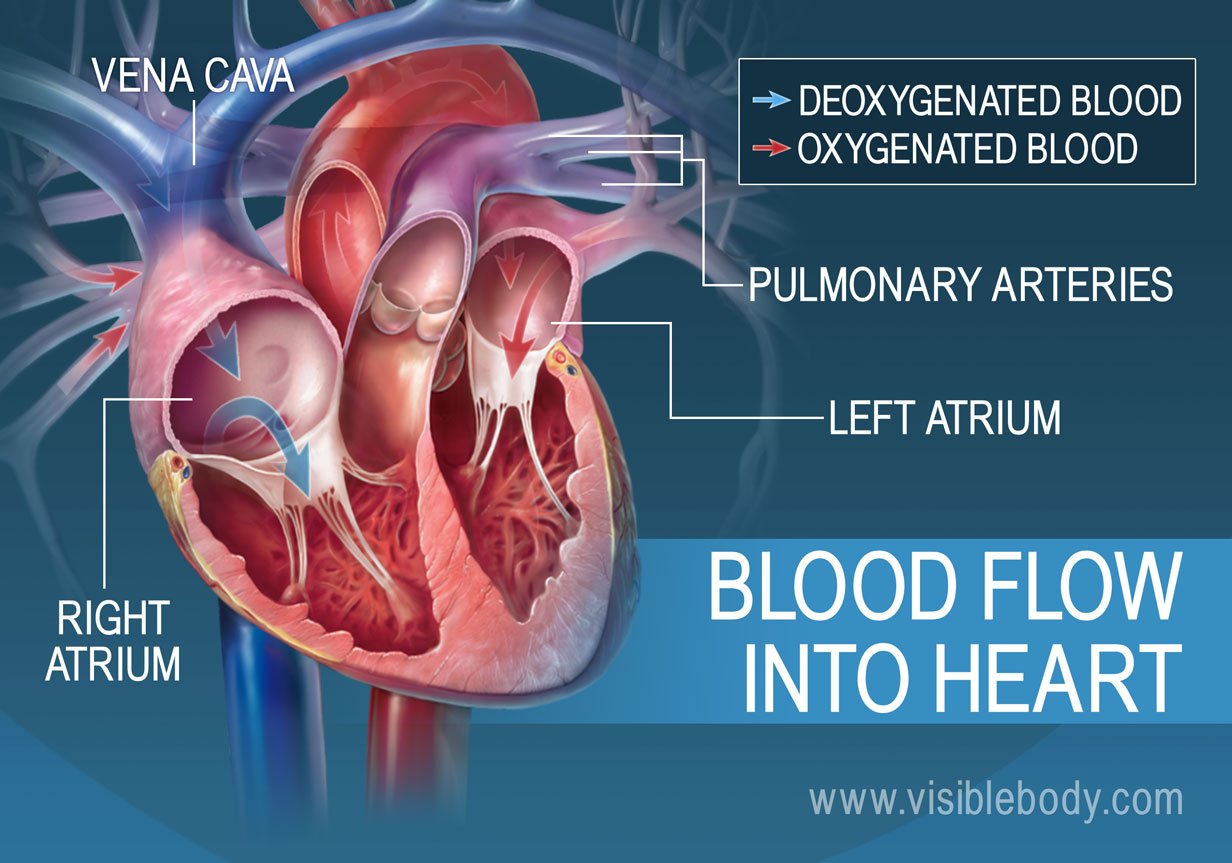Which of the Following Statements Best Describes Deoxygenated Blood
Only pulmonary arteries carry deoxygenated blood from the heart to the lungs under low pressure which make the pulmonary arteries unique. It involves the inhalation and exhalation of gases into the environment c.

Blood Flow Through The Heart Step By Step Diagram
The bodys blood-transporting system.

. Atria push blood from the ventricles to the arteries and ventricles push blood from the veins to the atria. It exchanges gases between the blood and the air in an environment d. It pumps oxygenated blood around the body via the systemic circuit.
The Circulatory System. Which of the following statement s is are true about heart. Valves prevent the backflow of blood into the atria and ventricles.
Nephrons are the basic filtering units of kidney each kidney poses a large number of nephrons approximately 1to 15 million the main components of a nephron are glomarous Bowmans capsule a long renal tubule collecting duct. Veins carry blood back to the heart. Which statement best describes blood flow through the pulmonary veins.
Pulmonary arteries and venous system except for pulmonary veins. Which of the following statements best describes the function of veins. D-to determine the correct placement of.
Pulmonary circulation is movement of blood between the heart and the lungs. It transports oxygen and carbon dioxide to cells all over the body. Pulmonary veins carry oxygen-rich blood from lung capillaries to the heart.
RBC exchanges oxygen with carbon dioxide as they are now known as deoxygenated RBC. Ii Left ventricle pumps oxygenated blood to different body parts while right ventricle pumps deoxygenated blood to lungs. The orientation of the QRS complex varies in the different leads of the 12-lead ECG.
As the right ventricle contracts it sends oxygenated blood through the aorta to all tissues of the body. Pulmonary arteryall veins except pulmonary vein and the right chambers of the heart contains deoxygenated blood which is usually dark red in colour. Atria push blood from the veins to the ventricles and ventricles push blood from the atria to the arteries.
Veins carry deoxygenated blood. Which statement best describes blood flow through the pulmonary veins. C Oxygen and carbon dioxide diffuse down their concentration gradients between blood and alveolar air.
Where does deoxygenated blood enter. Which statement best describes the difference between atria and ventricles. Which of the following best describes an electrocardiogram.
A Air moves in and out of the alveoli during breathing. Blood circulates through the heart in two ways. D Oxygen diffuses from alveolar air into.
Which statement best describes cardiac cells at rest. Which of the following chambers pumps blood toward the lungs. Thus option c is correct answer.
Which of the following statement best describes the primary function of the respiratory system. I Left atrium receives oxygenated blood from different parts of body while right atrium receives deoxygenated blood from lungs. Veins carry blood away from the heart.
Arteries are strong elastic vessels that carry oxygenated oxygen-rich blood away from the heart to the other tissues of the body under high pressure. The deoxygenated RBC then travels through the venules veins and return. Veins carry oxygenated blood.
Which of the following best describes the process of gas exchange in the lungs. The bodys blood-transporting system. View the full answer.
Deoxygenated blood flowing through the pulmonary veins is carried to the right atrium. Which of the following statements best describes the function of the left side of the ventricle. What is pulmonary circulation class 12th.
Which of the. Functioning of nephron the blood enters the kidney through a long renal artery which branches into Many capillaries associated with the. It maintains proper blood level pH.
They are identified as the pulmonary circuit and the systemic circuit. D-horizontal to v4 at left mid axillary line. B Carbon dioxide diffuses from deoxygenated blood in capillaries into the alveolar air.

In The Heart What Separates The Oxygenated And Deoxygenated Blood A Ventricle B Vessel C Septum Brainly Com

Which Of The Following Structures Ultimately Drains Deoxygenated Blood From Heart Musculature Through Coronary Vein Into Right Atrium

No comments for "Which of the Following Statements Best Describes Deoxygenated Blood"
Post a Comment